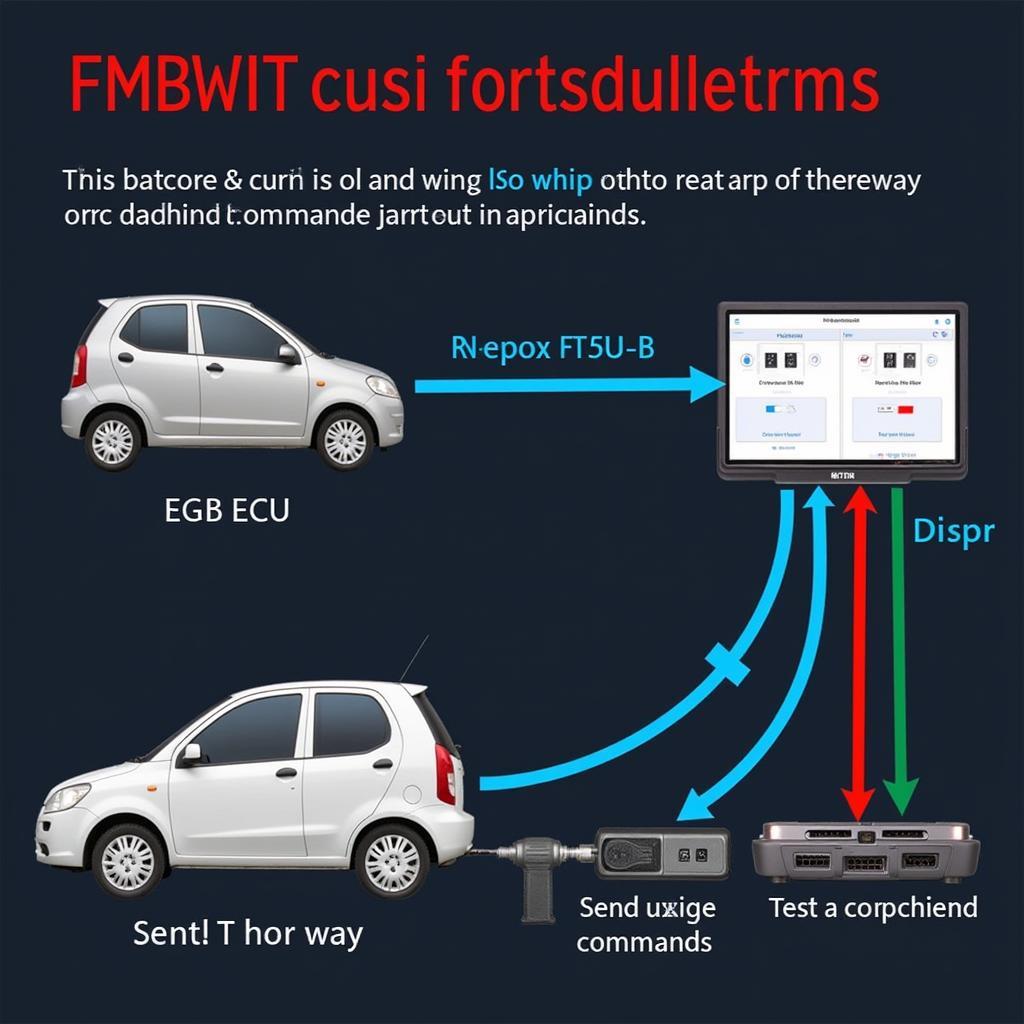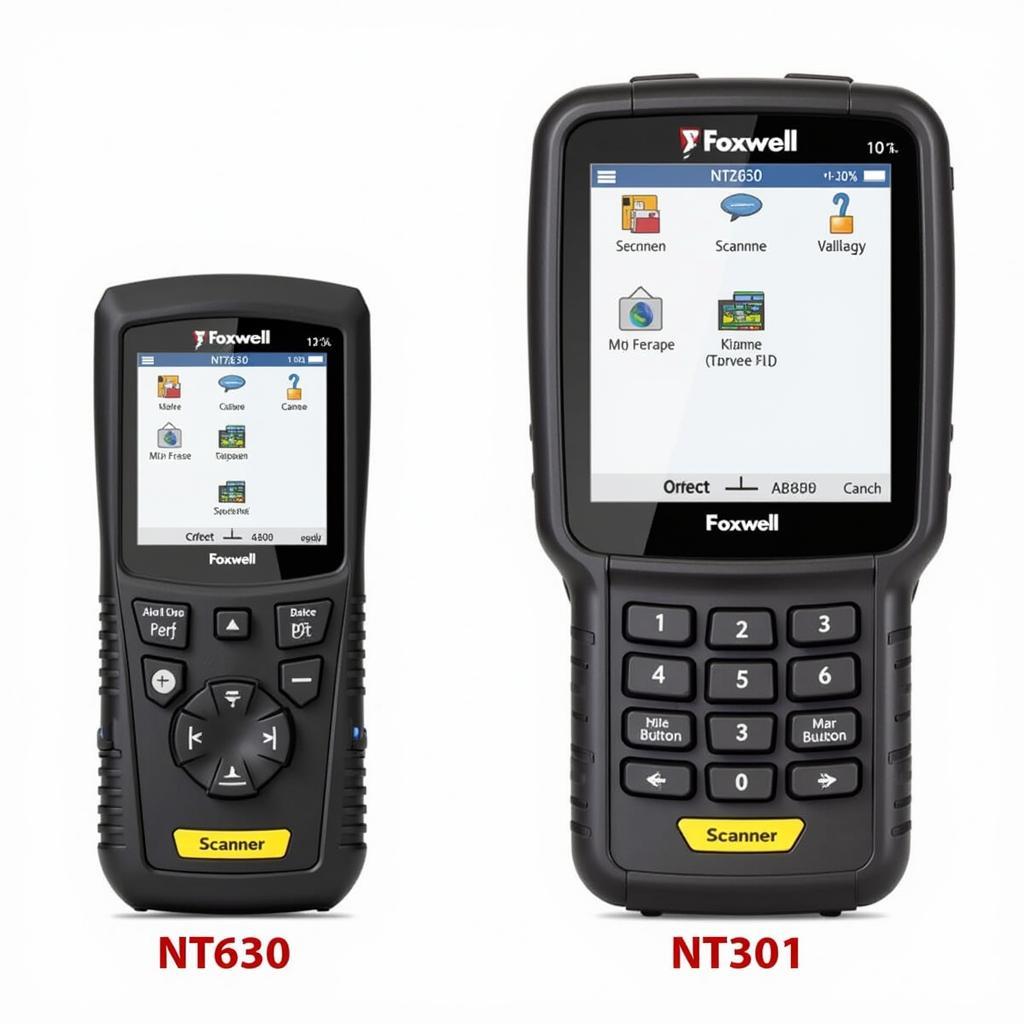The Foxwell Nt510 Bidirectional scanner has become a game-changer for car owners and mechanics alike. This powerful diagnostic tool goes beyond simply reading error codes; it allows you to interact with your car’s systems on a deeper level, making troubleshooting and repairs more efficient. In this guide, we’ll delve into the capabilities of the Foxwell NT510, explore its benefits, and provide practical insights to help you maximize its potential.
Understanding the Power of Bidirectional Communication
Before we dive into the specifics of the Foxwell NT510, let’s understand what makes bidirectional communication so revolutionary in the automotive world.
Traditional OBD2 scanners act as passive listeners, retrieving error codes stored in your car’s computer. While helpful, this approach only offers a glimpse into potential issues. Bidirectional scanners, like the Foxwell NT510, take it a step further by enabling two-way communication with your car’s electronic control units (ECUs).
 Foxwell NT510 Bidirectional Communication
Foxwell NT510 Bidirectional Communication
Think of it as having a conversation with your car instead of just listening to its complaints. With bidirectional control, you can:
- Activate components: Command individual components like fuel pumps, solenoids, or actuators to function, verifying their operation in real-time.
- Run system tests: Initiate specific system tests like ABS module bleeding or injector balance tests to pinpoint the root cause of malfunctions.
- Program and relearn: Perform tasks like key fob programming, throttle position sensor relearn, or steering angle sensor calibration – procedures often requiring specialized equipment.
Why Choose the Foxwell NT510?
The Foxwell NT510 stands out in the crowded market of bidirectional scanners with its impressive features and user-friendly design. Here’s why it’s a popular choice for both DIY enthusiasts and professionals:
Extensive Vehicle Coverage:
The Foxwell NT510 supports a vast range of car makes and models, covering both domestic and import vehicles. It boasts comprehensive coverage for European, Asian, and American vehicles, making it a versatile tool for multi-vehicle workshops or individuals working on various cars.
Advanced Diagnostics:
Beyond basic code reading and erasing, the NT510 offers:
- Live data streaming: Monitor multiple parameters simultaneously, such as engine RPM, coolant temperature, or oxygen sensor readings, to analyze performance in real-time.
- Freeze frame data: Capture a snapshot of critical engine data at the moment an error code is triggered, providing valuable clues for diagnosis.
- Component actuation tests: Directly engage with individual components, allowing you to isolate faulty parts and verify repairs with confidence.
User-Friendly Interface:
Navigating the NT510 is intuitive, even for beginners. Its clear menus, logical layout, and helpful on-screen prompts guide you through various functions.
Budget-Friendly:
Compared to high-end professional scanners, the Foxwell NT510 offers exceptional value for money. It delivers advanced functionality at a fraction of the cost, making it an accessible option for home mechanics and smaller workshops.
Putting the Foxwell NT510 to Work: Common Use Cases
The Foxwell NT510’s versatility shines through its ability to handle a multitude of automotive tasks. Here are just a few examples of how this tool can simplify your automotive life:
Pinpointing an Elusive Electrical Fault:
Imagine your car intermittently stalls, with the “Check Engine” light flashing sporadically. A traditional scanner might reveal a generic code related to the crankshaft position sensor. With the NT510, you can go beyond the code by monitoring live data from the sensor while driving. This allows you to observe if the sensor readings drop out, confirming a faulty sensor as the culprit.
Efficiently Bleeding Your Brakes:
Bleeding brakes, especially on vehicles with ABS, can be a tedious task. The Foxwell NT510 simplifies this by activating the ABS module’s bleed sequence, allowing you to bleed the brakes efficiently and effectively.
Troubleshooting a Faulty Fuel Pump:
Suspecting a failing fuel pump? Instead of relying on guesswork, the NT510 allows you to command the fuel pump to run. If the pump doesn’t prime or struggles to build pressure, you have your answer without physically accessing the pump itself.
Performing a DIY Throttle Body Relearn:
After cleaning or replacing a throttle body, many modern vehicles require a “relearn” procedure. The Foxwell NT510 often includes this functionality, eliminating the need for a costly trip to a dealership for this routine task.
Unlocking Full Potential: Resources and Support
While the Foxwell NT510 is user-friendly, it’s essential to leverage available resources for maximum benefit:
- User Manual: Your first point of reference, providing detailed instructions on the device’s features and operation.
- Online Forums: Connect with other Foxwell users to share experiences, seek advice, and discover innovative applications for your scanner.
- ScanToolUS Support: Our team of experts at ScanToolUS is just a phone call away at +1 (641) 206-8880 or visit us at 1615 S Laramie Ave, Cicero, IL 60804, USA. We’re here to assist you with any questions or challenges you may encounter.
Conclusion
The Foxwell NT510 bidirectional scanner empowers car owners and mechanics alike to take control of their vehicle’s health. Its ability to communicate with your car, run tests, and activate components elevates the diagnostic process from passive code reading to active troubleshooting. This translates to faster, more accurate repairs, saving you time and money.
Ready to unlock a deeper understanding of your vehicle? The Foxwell NT510 is your key. Contact us at ScanToolUS for expert advice and guidance on choosing the right diagnostic tools for your needs.


Pingback: Foxwell Direct Store: Your Ultimate Guide to Professional Automotive Diagnostics - Car Scan Tool
Pingback: Crank Relearn Foxwell: A Comprehensive Guide - Car Scan Tool